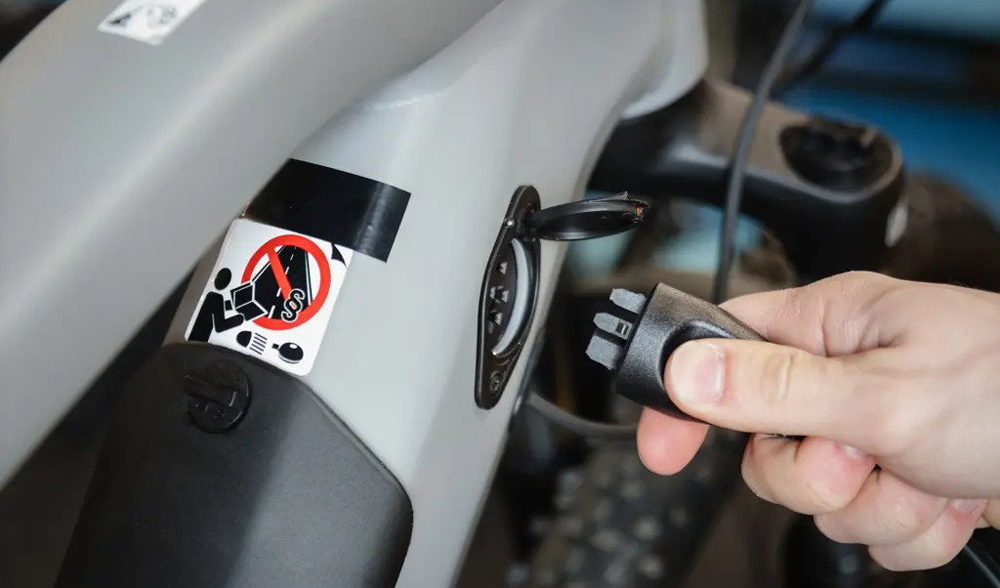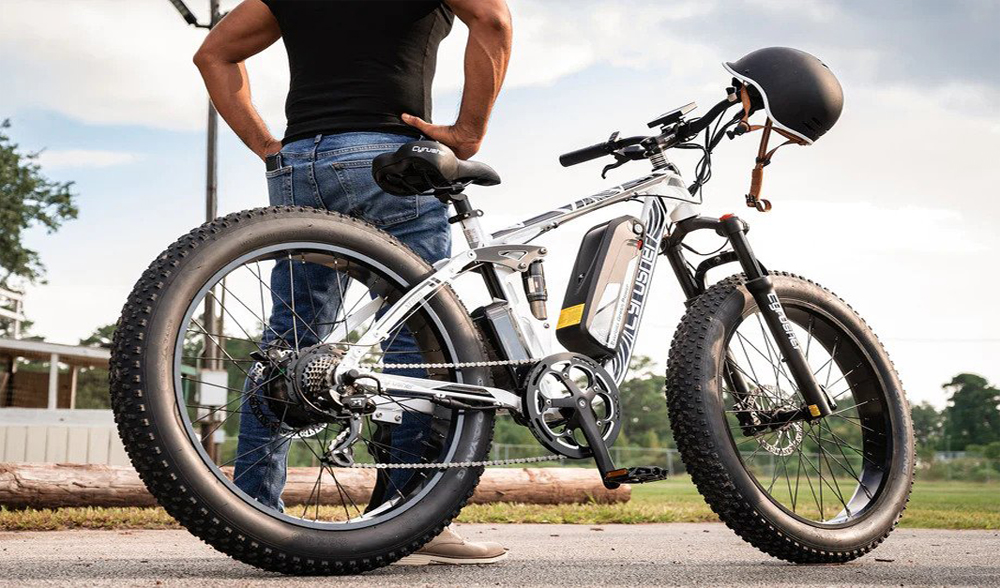Congratulations on acquiring your eBike! As you unbox it, you’ll find a manual, a set of technical tools, and a eBike charger. You might be tempted to toss the box into the back of your car, and with anticipation and excitement, you’re all set for the outdoor adventures that lie ahead.
However, what about the eBike charger? What role does it play in the well-being of your eBike, and how can you optimize your bike’s performance with this essential device?
For us at Power1986, an eBike charger serves as the lifeblood of your battery and bike. It’s crucial to comprehend all facets of your bike to ensure its well-being and, ultimately, your riding enjoyment. Let’s delve into the most frequently asked questions about eBike chargers.
1. How to Charge My eBike?
Charging an eBike is as straightforward as connecting a laptop. Essentially, an eBike charger comprises three key components:
1. Charger Plug-in: This component links to the charging case and then plugs into an electrical outlet.
2. Charge Case: The charging case serves the dual purpose of safeguarding and cooling the electronics responsible for transmitting power to the electric battery.
3. Charge Adapter: The adapter is connected to the charging port on the battery, regardless of whether it’s installed on the bike or not. eBike adapters are typically specific to the bike brand, meaning you might encounter different adapter styles for a Gazelle compared to a Raleigh, for instance.
Charging your e-bike is a breeze—just insert the plug into the wall outlet and connect the adapter to the battery. You can determine if you’ve reached a full charge by inspecting the bike’s display or the eBike charger’s light indicator.

2. Where to Charge My E-Bike?
In the United States, eBike batteries can be charged using a standard 120-volt outlet. This implies that you can charge your battery in virtually any location, from your garage to your workplace. If you’re attempting to charge your bike’s battery in a public area, it’s advisable to seek permission from the business first – it’s a courteous gesture!
3. How Often to Charge My eBike?
While you have the flexibility to charge your eBike whenever you like, it’s not always essential. While a full battery is convenient, it may not be necessary to charge after every ride. Think of it like your cell phone – you don’t necessarily charge your phone after every call, do you?
I understand it might seem subjective, but it’s best to charge your bike based on your usage patterns. If you’re a frequent rider, you’ll likely need to charge the battery more frequently. For occasional riders, maintaining the battery around 80% capacity could be a good practice. If you plan to store your battery for extended periods, it’s advisable to keep the charge level between 40% and 80%.
4. How long will My Battery Last after a Charge?
This is a commonly asked question, but regrettably, it doesn’t always have a straightforward answer.
To begin, let’s delve into the fundamentals of the battery, as it stands as one of the most crucial components of your eBike. Every bike boasts specifications such as Watts, Amp-Hours, and Voltages, which collectively determine the overall range of your battery. You can locate these battery specifications on the product page or in your user manual. It’s worth noting that eBikes crafted for commuting often feature larger battery capacities when compared to those designed for shorter trips within town.
Secondly, your battery’s lifespan hinges on several factors, including the terrain you’re riding on, physical conditions, the level of assistance, and the distance covered. Uphill and challenging terrains can significantly impact your battery life. If you observe that your battery depletes rapidly, it’s essential to consider your riding environment. We’ve observed that batteries tend to discharge more quickly when tackling uphill climbs compared to riding on level sidewalks.

Riding any bike is possible, but not every bike is suitable for every rider. In reality, we’ve observed that individuals who rely more on assistance or who have a larger build often require a larger battery. Although it might not be the most exciting aspect to contemplate, taking your personal requirements into account is crucial for selecting a bike battery that suits your needs. There’s nothing more frustrating than riding with a battery that depletes after just 15 miles!
Modern bike batteries have made significant advancements compared to their older versions. With today’s eBikes, it’s common to achieve a range of approximately 30 to 50 miles on a single charge. Certain brands even offer options to enhance your battery capacity. Depending on the specific bike model, you may have the option to either switch between multiple batteries or add a secondary battery. It’s advisable to conduct some research on the particular model you intend to purchase, as not all bikes provide this flexibility.
5. How to Prolong Battery Capacity?
Put simply, the most effective approach to extend the lifespan of your eBike’s battery is to reduce the use of the throttle or higher levels of assistance.
Nonetheless, your battery’s capacity will undergo changes as time passes. As per Battery University, elements like service life and the number of charge cycles significantly influence battery longevity. Additionally, exposure to elevated temperatures or sustained high charge voltages can lead to a reduction in your battery’s lifespan. Conversely, allowing your battery to remain excessively low can also be detrimental to its charge threshold. As we’ve previously highlighted, maintaining your bike’s battery charge between 40% and 80% is the recommended range for preserving battery life.
6. Can I Charge the Battery with a Different eBike Charger?
Are all eBike chargers identical? Not quite! eBike charger specifications can differ from one eBike brand and model to another. Interchanging components can potentially cause damage to both your battery and the charger in use.
Truthfully, the most optimal practice for your battery is to charge your bike using the charger that was provided with the purchase. If you require a rapid charge, we recommend carrying your eBike charger in a backpack or having a saddlebag attached to your rear rack for convenient storage. This way, you won’t have to depend on using another eBike charger.

7. What’s the Cost for Charging an eBike?
You might be concerned that charging your battery will lead to a higher electricity bill. However, this is often not the case. Gazelle bikes have noted that a single battery charge typically costs between 5 to 8 cents. Moreover, many eBike chargers are equipped with a cutoff sensor that activates when the battery reaches full capacity, ensuring that you’re not billed for more electricity than necessary.
If you’re utilizing your bike for commuting, it’s worth weighing the cost of electricity against the expense of fueling up your car – you’ll likely discover substantial savings!
8. Can I Use My Battery to Charge Other Items?
Oh, no! You’ve observed your headlight dimming and flickering as the sun sets. But don’t worry! Numerous eBike batteries and displays are equipped with USB ports that enable the charging of essential items like headlights and smartphones. Although this can impact your battery’s capacity, the capability to charge vital accessories can significantly enhance your safety and communication.
Final Thoughts on eBike Chargers
eBike chargers are generally not as complex as some may think. Even individuals with minimal tech knowledge can easily plug in and charge their bike. However, having a good understanding of how to effectively use your eBike charger and battery will enhance your overall eBike experience.
We believe that some of your initial inquiries regarding eBike chargers have been addressed. Please remember that you are always welcome to reach out to us via sending us an email at [email protected] if you have any further questions or Visit Power1986.com. Our objective is to provide you with comprehensive information to ensure your confidence in every aspect of your eBike.
